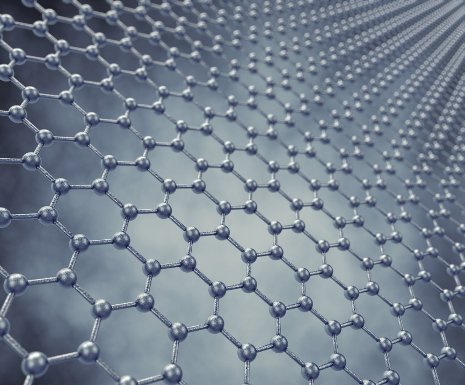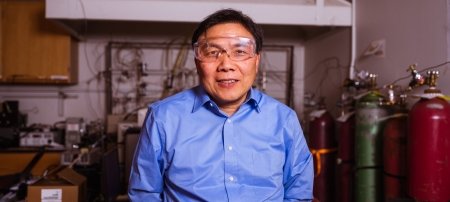Graphene Boosts Efficiency of Next-Gen Solar Cells

The coolest new nanomaterial of the 21st century could boost the efficiency of the next generation of solar panels, a team of Michigan Technological University materials scientists has discovered.
Graphene, a two-dimensional honeycomb of carbon atoms, is a rising star in the materials community for its radical properties. One of those properties is electrical conductivity, which could make it a key ingredient in the next generation of photovoltaic cells, says Yun Hang Hu, a professor of materials science and engineering.
Dye-sensitized solar cells don’t rely on rare or expensive materials, so they could be more cost-effective than cells based on silicon and thin-film technologies. But they are not as good at converting light into electricity.
In dye-sensitized solar cells, photons knock electrons from the dye into a thin layer of titanium dioxide, which relays them to the anode. Hu’s group found that adding graphene to the titanium dioxide increased its conductivity, bringing 52.4 percent more current into the circuit.
The excellent electrical conductivity of graphene sheets allows them to act as bridges, accelerating electron transfer from the titanium dioxide to the photoelectrode,” Hu said.
The team also developed a comparably foolproof method for creating sheets of titanium dioxide embedded with graphene. It first made graphite oxide powder, then mixed it with titanium dioxide to form a paste, spread it on a substrate (such as glass) and then baked it a high temperatures.
"It’s low-cost and very easy to prepare,” said Hu. But not just any recipe will do. “If you use too much graphene, it will absorb the light in the solar cell and reduce its efficiency,” he said.
Their work was presented at the US-Egypt Joint Workshop on Solar Energy Systems, held March 12-14 in Cairo. It was funded by the American Chemical Society Petroleum Research Fund and the National Science Foundation. Their paper “Promoting Effect of Graphene on Dye-Sensitized Solar Cells,” authored by Hui Wang, Samantha Leonard and Hu, has been submitted to Industry and Engineering Chemistry Research. Wang is a PhD candidate and Leonard is an undergraduate, both in materials science and engineering.
Michigan Technological University is an R1 public research university founded in 1885 in Houghton, and is home to nearly 7,500 students from more than 60 countries around the world. Consistently ranked among the best universities in the country for return on investment, Michigan's flagship technological university offers more than 120 undergraduate and graduate degree programs in science and technology, engineering, computing, forestry, business, health professions, humanities, mathematics, social sciences, and the arts. The rural campus is situated just miles from Lake Superior in Michigan's Upper Peninsula, offering year-round opportunities for outdoor adventure.




Comments